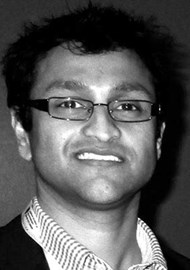This paper describes another useful imaging technique to monitor Necrotising Otitis Externa (NOE). Echoplanar diffusion weighted magnetic resonance (DW MR) shows high signal on the ‘ADC map’ with active disease and this reduces in signal intensity as symptoms improve. This should not be confused with non-echo planar imaging for cholesteatoma detection. Normally a low CRP and resolution of otalgia is a good indicator of treatment success but imaging helps to corroborate the clinical impression. This study followed seven patients with NOE with a baseline CT and DW MR scan at two weeks from presentation, followed by at least one further MR some months down the line. Treatment with antimicrobials varied from 10 to 88 weeks. In six patients after treatment was stopped due to clinical and biochemical normalisation, MR showed resolution of the high signal. In the last patient, disease was clinically suspected to be persistent and the DW MR scan continued to show high signal. This does indeed strongly suggest that DW MR is a useful tool in assessing for active disease (although of course patient numbers are small), and is a safer imaging tool than CT or nuclear medicine scans. Obvious questions raised are: how quickly does the DW MR scan normalise after the disease has resolved or is quiescent clinically; can it indeed predict when one can stop or reduce treatment; is a CT needed in addition to help with interpretation of disease activity as was undertaken initially in all seven patients and repeated in some? This will no doubt mean a much larger cohort of NOE patients being scanned with DW MR and studied prospectively. I will certainly be utilising this technique in the next NOE patient I encounter and I can think of the odd patient with dementia and NOE where this sort of scan would have helped us in treatment decisions.
New MRI technique assesses treatment response in skull base osteomyelitis
Reviewed by Anand Kasbekar
Diffusion-weighted magnetic resonance imaging as a novel imaging modality in assessing treatment response in necrotizing otitis externa.
CONTRIBUTOR
Anand Kasbekar
BMedSci, DOHNS, FRCS (ORL-HNS), DM, Nottingham University Hospitals NHS Trust; Associate, The University of Nottingham; Otology and Hearing Group, Division of Clinical Neuroscience, School of Medicine, University of Nottingham, UK.
View Full Profile



